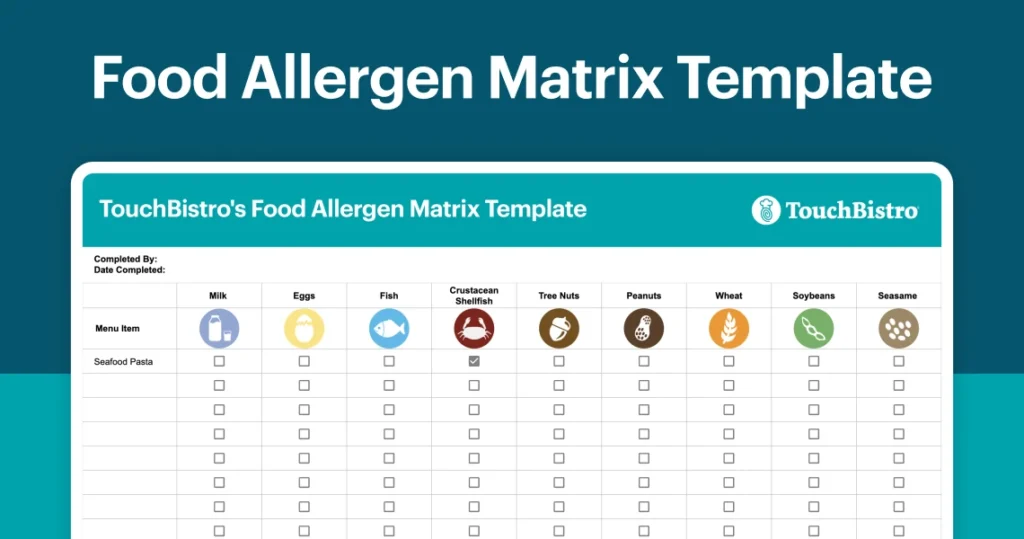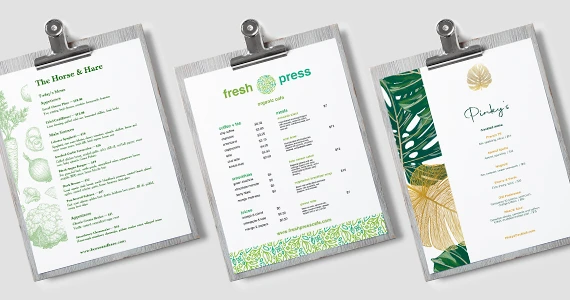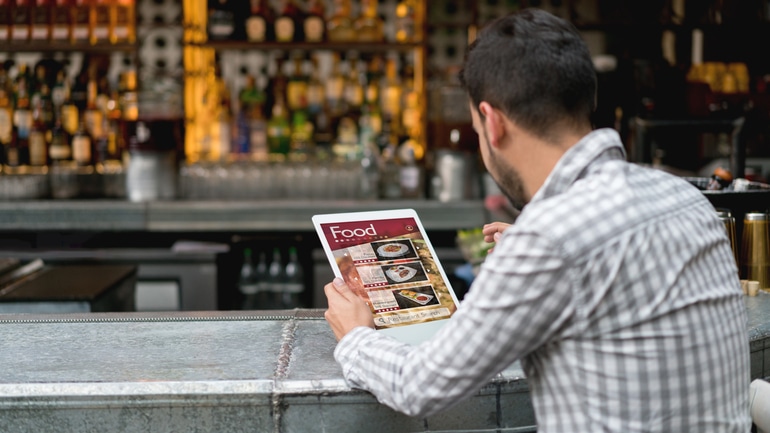As a restaurateur, your menu is your ultimate sales tool. You can have the most sophisticated marketing campaign around, but when a potential customer finally feasts their eyes on your menu, you need to turn on the charm if you want to land their business. That’s why writing irresistible menu descriptions is key to boosting sales, and increasing your profits by up to 15%.
Top-notch menu descriptions are designed to entice your guests by engaging their senses, conveying the quality of your food, and sometimes even the history behind your cuisine. The best menu description examples are optimized for mobile viewing, and clearly explain what’s in each dish, making it easy for your customers to choose their meal and place their order.
Now, it’s time to put on your wordsmith’s hat. In this guide to menu writing, we’ll cover:
- The advantages of excellent menu descriptions
- 7 tips for crafting compelling menu descriptions
- Common menu description errors to avoid
Let’s start with the appetizer!

The Benefits of Great Menu Descriptions
Having the best restaurant menu descriptions on the block is much more than an exercise in vanity or showmanship (although clever prose that gets a few chuckles certainly won’t hurt your brand’s image). Well-written food descriptions complement excellent restaurant menu design to help grow your business in several ways.
1. Influence Customer Behavior
You may know your food is the real deal, but your guests won’t have a chance to experience it if you can’t get them to order from you. Today’s consumers are overwhelmed by choice – including restaurant options – so you need to stand above your competition by writing menu descriptions that illustrate the quality and features of your dishes in a convincing way. Once you win a guest over for the first time, you’ll have a 60-70% chance of earning their business again.

Download this customizable template for you and your staff to use to protect the health and safety of your guests with food allergies.
2. Increase Revenue
“I was only going to order a meal, but the appetizers sounded so good, I just had to have one!” Most people have uttered those words at some point. Your goal is to make that phrase commonplace in your restaurant. How do you do it? By writing food descriptions that encourage larger orders, and ultimately bigger check sizes. This kind of suggestive selling can grow your revenue by up to 30% with minimal effort and expense on your end.
3. Impact Brand Perception
The best menu description examples are original, attention-grabbing, boost your brand’s image, and help to build strong, long-term relationships with your guests. Effective restaurant branding can also make your menu description examples stand out. Over 85% of consumers consider authenticity to be a major driver of brand affinity. You want your guests to think of you instead of your competition when they’re choosing where to dine or where to order takeout from. Memorable food descriptions can help your brand remain top of mind.

7 Tips for Writing Must-Order Menu Descriptions
Now that we’ve finished the first course and you understand the advantages of top-notch menu descriptions, it’s time for the main event: learning how to craft compelling descriptions for your own dishes – you’ll be a modern-day Shakespeare in no time.
1. Nod to Well-Known or Local Regions
Neapolitan pizza. Kobe beef. Maine lobster. Referencing a location that’s renowned for a particular dish, or an ingredient you use in your restaurant is a great way to add value to your menu descriptions and allude to the high quality of your cuisine. This is a particularly wise move, since 72% of diners rank food quality as the most important factor when deciding on a restaurant.
Just take the example of Little Anthony’s Italian Restaurant in Toronto, which has mastered this technique on their dinner menu:
It’s important to note that regions don’t always have to be world-famous or far away to earn a mention in your menu. Nowadays, customers love to support local businesses, so be sure to include the names of nearby producers you source ingredients from in your food descriptions. The added bonus to this tactic is that you can ask your suppliers to share in the good vibes and cross-promote your restaurant.
2. Engage the Senses
What makes your burger better than the one served by the pub across the street? Is it the soft brioche bun or creamy goat cheese that melts in your mouth? Perhaps it’s the crisp, garden-fresh arugula that adds a satisfying crunch.
Strong menu description examples use adjectives to engage guests’ senses and paint a picture of each dish that is so vivid they can practically taste it – and that will make them want more. Doing this will set you apart from all of your competitors who are still simply describing their burger as housemade and hoping that’ll make the cut (pun intended).
North American chain Earl’s nails the mouth-watering restaurant menu description on the dinner menu for their Bellevue, WA location:
3. Share a Backstory
By crafting a brand story that’s true to your experience and resonates with customers, 55% will be more likely to give you their business. It’s often said in marketing circles that people don’t buy from companies; they buy from other people. One of the best ways to put a face to your restaurant is by telling your customers the story of what you’re all about.
Just take the example of Blower’s & Grafton, a restaurant created to bring Maritime Canadian cuisine to Western Canada. Their menu descriptions are written to evoke the feeling of home for east coasters who dine at the pub. And for those who aren’t from the region, the menu descriptions paint a vivid picture of the lifestyle.
Use your menu as an opportunity to share your passion with your guests. What inspired you to start your restaurant? Was it a family tradition? Maybe it was a love of food sparked by your travels to a certain part of the world, or the time you spent living abroad.
4. Write for Simplicity and Clarity
While you should add location details and adjectives to your menu where it makes sense, the key to excellent menu writing is to keep food descriptions fairly concise (ideally 140-260 characters). Simplicity attracts customers to your restaurant like bees to honey. In fact, 62% report that they’d pay a premium for a straightforward experience.
As a general rule, your guests should be able to understand what’s in a dish by reading its name. However, if you have international cuisine on your menu with names people may not recognize, be especially clear in your descriptions about what’s included in each dish. Make sure not to skip out on the information that matters, such as how many spring rolls come with an order.
The upscale pub BLAKE, nestled in Canada’s Rocky Mountains, keeps things simple on their appetizer menu with one-line descriptions that clearly indicate whether a dish is vegetarian, available as a dairy-free option, or available as a gluten-free option. There’s a corresponding legend at the bottom of their menu so no one has to decipher the acronyms.
5. Optimize for Mobile
With the estimated value of mobile ordering at $38 billion in 2020, it’s essential for restaurateurs to offer online menus that are optimized for mobile viewing, especially as the COVID-19 pandemic continues to drive takeout and delivery orders. Even if you’re offering dine-in service again, having a digital menu can help to minimize contact, and many of your guests will likely appreciate the option.
Remember, people read online restaurant menus differently than their printed counterparts due to the nature of small mobile screens, so your menu descriptions need to be designed for easy navigation. This includes creating categories your customers can access in one click, without having to scroll through your entire menu. You can also highlight your most popular dishes so people can check out your top sellers and order them easily.
Finally, don’t forget the upsell! Make it effortless to add extras to an order, like this:
6. Include Cross-Selling Suggestions
Your guests will typically spend 90 seconds perusing your menu before they decide what to order. To make the most out of the time you have their attention, try using cross-selling techniques directly within your menu descriptions to increase your average check size. This involves offering your customers an item that complements their order, such as a Margarita with their fish tacos.
Stumped on pairings? Here’s a little inspiration from the 3- or 5-course tasting menu of California-based Uncle Yu’s at the Vineyard:
7. Proofread Before You Print
There’s a big difference between fresh mussels and fresh muscles. Even smaller errors like a missing letter or out-of-place punctuation mark can be distracting for your guests, and make your menu look messy and unprofessional. While this is less of an issue for your online menu since you can update it quickly and easily, it’s important to read your hard copy version carefully before you print 100 copies.
It’s always best to get a second set of eyes on any food descriptions you write, so find your sharpest eagle eyes on staff and ask that team member to review your menu. Otherwise, you might end up on BuzzFeed’s fail list!

Creating an eye-catching restaurant menu has never been easier thanks to these free restaurant menu templates.
Common Menu Description Mistakes to Avoid
This adventure in culinary writing wouldn’t be complete without covering what not to do when crafting your restaurant menu descriptions. If you see any of these faux pas in your menu, it’s time to get out the red pen.
1. Writing Complicated Descriptions
Even if you think they’re creative, those verbose food descriptions full of fancy words won’t help you increase your sales. On average, when you’re writing copy for the general public, you should stick to a Grade 8 reading level. This is why keeping your menu descriptions clear and simple is so important. Your goal is to make it easy for your customers to choose their order, enjoy their food, and get excited about their next visit to your restaurant.
2. Not Optimizing for Mobile
When you’re browsing an online menu, there are few things more frustrating than trying to read descriptions that are way too long for a small screen, or zooming in on tiny text that was clearly only meant to be viewed on a desktop computer. Nowadays, your menu needs to be optimized for mobile so it’s a breeze to navigate.
It’s also a smart move to have an online ordering system so your customers can choose their order and purchase it right from their phone. Convenience is key!

Download this customizable template for you and your staff to use to protect the health and safety of your guests with food allergies.
3. Using Negative Words
Burnt. Fatty. Sugary. These adjectives may sound fine to you as a restaurateur with knowledge of healthy fats (avocado, anyone?), but it’s best to leave them out of your menu descriptions. Dining at your restaurant should always be a positive experience, and you don’t want your guests feeling guilty about indulging in a piece of cheesecake after dinner.
4. Including Currency Signs
According to pricing experts, using currency signs in your menu descriptions is a big no-no. Your job is to do everything you can to deliver an excellent customer experience, which includes not reminding your guests that they’re spending money to dine with you.

It’s Time to Get Creative
You’re now up to speed on how stellar menu descriptions can help increase revenue for your restaurant. Try out the 7 tips we’ve shared with you, and be sure to avoid the 4 common mistakes we’ve cautioned against. Oh, and have fun with it, too.
Happy writing!
Download our free inventory template
Sign up for our free weekly TouchBistro Newsletter







